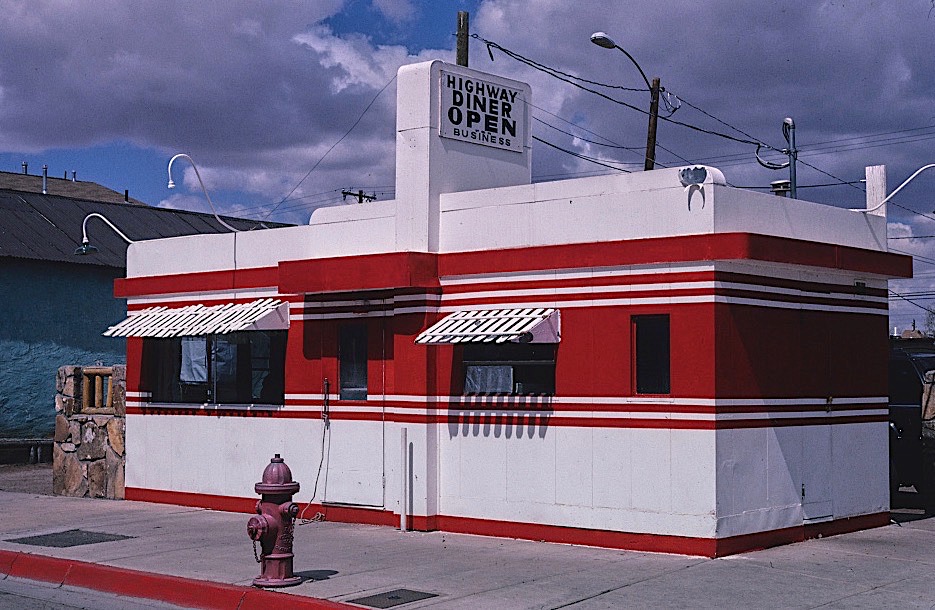MARIANI’S
Virtual
Gourmet
July 25, 2021
NEWSLETTER
❖❖❖
IN THIS ISSUE
LONG ISLAND'S NORTH FORK
By Geoff Kalish
NEW YORK CORNER
AMIGO BY NAI
By John Mariani
CAPONE'S GOLD
CHAPTER SEVENTEEN
By John Mariani
NOTES FROM THE WINE CELLAR
THE WINERIES OF THE
NORTH FORK, LONG ISLAND
By Geoff Kalish
❖❖❖

On this week's episode of my WVOX Radio Show "Almost Golden," on
 Wed. July 28, at 11AM EDT,I will be
interviewing Ali MacGraw. Go to: WVOX.com.
The episode will also be archived at: almostgolden.
Wed. July 28, at 11AM EDT,I will be
interviewing Ali MacGraw. Go to: WVOX.com.
The episode will also be archived at: almostgolden.❖❖❖
LONG ISLAND'S NORTH FORK
By Geoff Kalish

Shorecrest BnB
Since our
last visit to the North Fork of Long Island,
some 15 years ago, much has changed, and for the
better. There’s not only an increase in wineries
(from 20 or so to now more than 50) and the
range of wine they produce but the quality of
their products is far better. Dining options
have improved, not only in variety of fare
available but in the sophistication of the
what’s served. And shopping options, while not
nearly approaching the level of the Hamptons,
offer an expanded array of shops, especially
those featuring casual clothing and gourmet food
items. In addition, there’s now an array of
reasonably priced, top-notch lodging facilities.
 For
example, we stayed at the Shorecrest
Bed and Breakfast, in Southold, featuring
its own private beach across the street, that,
until its current owner (Marilyn Marks) took it
over some 16 years ago, did not have private
bath facilities in its five now stylishly
decorated rooms (left). Moreover, the
breakfast offered—on tables set with fine linen,
dishes and silver—is more than a cut above the
usual B&B fare, with not only a selection of
breads, pastries and fresh fruit but a variety
of egg and pancake preparations that change
daily.
For
example, we stayed at the Shorecrest
Bed and Breakfast, in Southold, featuring
its own private beach across the street, that,
until its current owner (Marilyn Marks) took it
over some 16 years ago, did not have private
bath facilities in its five now stylishly
decorated rooms (left). Moreover, the
breakfast offered—on tables set with fine linen,
dishes and silver—is more than a cut above the
usual B&B fare, with not only a selection of
breads, pastries and fresh fruit but a variety
of egg and pancake preparations that change
daily.
While a few wineries require a previously
made visitor appointment (most notably the very
popular Paumanok Vineyards), most do not, and
for a fee offer tastings of their selections as
well as snacks. Two of the most scenic of the
eight wineries we visited were Bedell Cellars,
with tastings conducted at tables overlooking
the vineyards, or at a modernistic bar featuring
lots of information about the wines from the
bartender, and at Sparkling Pointe, with
tastings of Méthode Champénoise bubbly and
snacks at umbrella-covered tables on a patio
adjacent to the vineyards. As to the wines
themselves (a selection of which are discussed
in the article below), in general the quality
was far improved from when we last visited,
especially the white wines, albeit the prices
were quite high when compared with bottles of
equal quality from other areas.
We found the best
shopping opportunities in Greenport, with
numerous stores offering casual clothing from
other than name brand producers. And, at Greenport
Wines & Spirits (120 Front
Street), as expected, there’s a large
selection of local bottles but surprisingly some
excellent prices for Italian wines and
well-priced, hard-to-find Alsatian Willem and
Pierre Sparr Gewürztraminers. Also, in addition
to a number of ice cream shops and restaurants,
with fare ranging from American seafood to Greek
to French to Italian, there’s
a classic carousel alongside the pier. And for
those into top-quality local produce and locally
made foods, particularly a tangy tarragon
mustard, there’s two-year old About Food,
a small roadside shop in Southold (53975 Main
Road), where proprietor GP Lane offers
recipes and advice for using products sold.
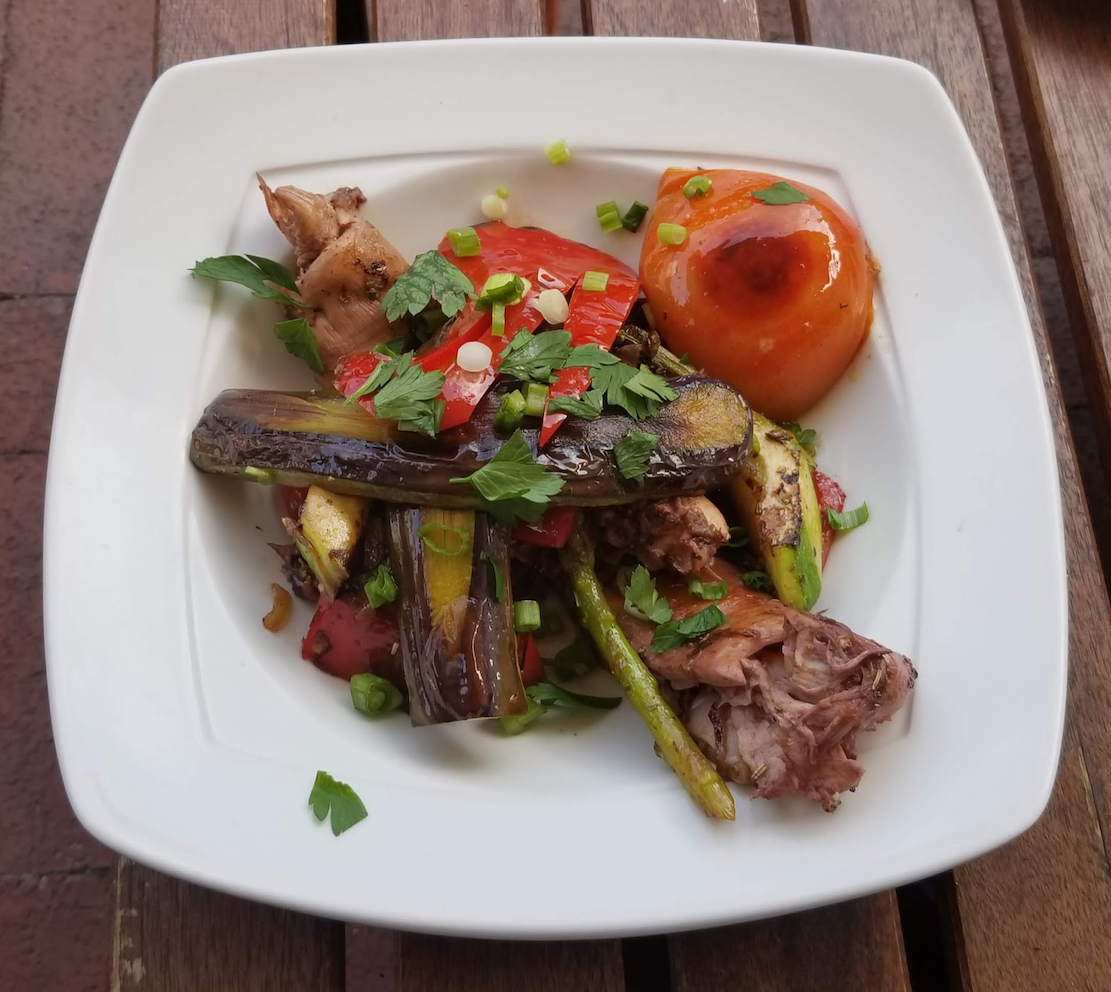 Based
on recommendations in advance from locals, we
dined at three restaurants, Olive Branch, North
Fork Table and Inn, and The Frisky Oyster.
Based
on recommendations in advance from locals, we
dined at three restaurants, Olive Branch, North
Fork Table and Inn, and The Frisky Oyster.
At the quite expensive Olive
Branch Restaurant & Bar (120 Front
Street), located in the center of
Greenport in a cul de sac, the fare is
Mediterranean with an emphasis on Turkish and
Greek specialties. For appetizers we shared a
simple Ottoman Shepherd’s Salad of tomatoes,
cucumbers, red onion, parsley and feta cheese
with a simple oil and vinegar dressing ($18) and
a tasty dish of Eggplant Istanbul (left),
with the vegetable roasted and mashed with red
peppers and garlic ($14).
While there’s a large
assortment of kabobs, and lamb specialties, we
chose the jumbo octopus, which brought a very
soft tentacle with sides of steamed rice and
ratatouille ($47), and an order of grilled jumbo
shrimp with the same sides ($52). We accompanied
the meal with an Alsatian Riesling and concluded
with an order of sweet baklava ($12).
Dinner at the North
Fork Table & Inn in 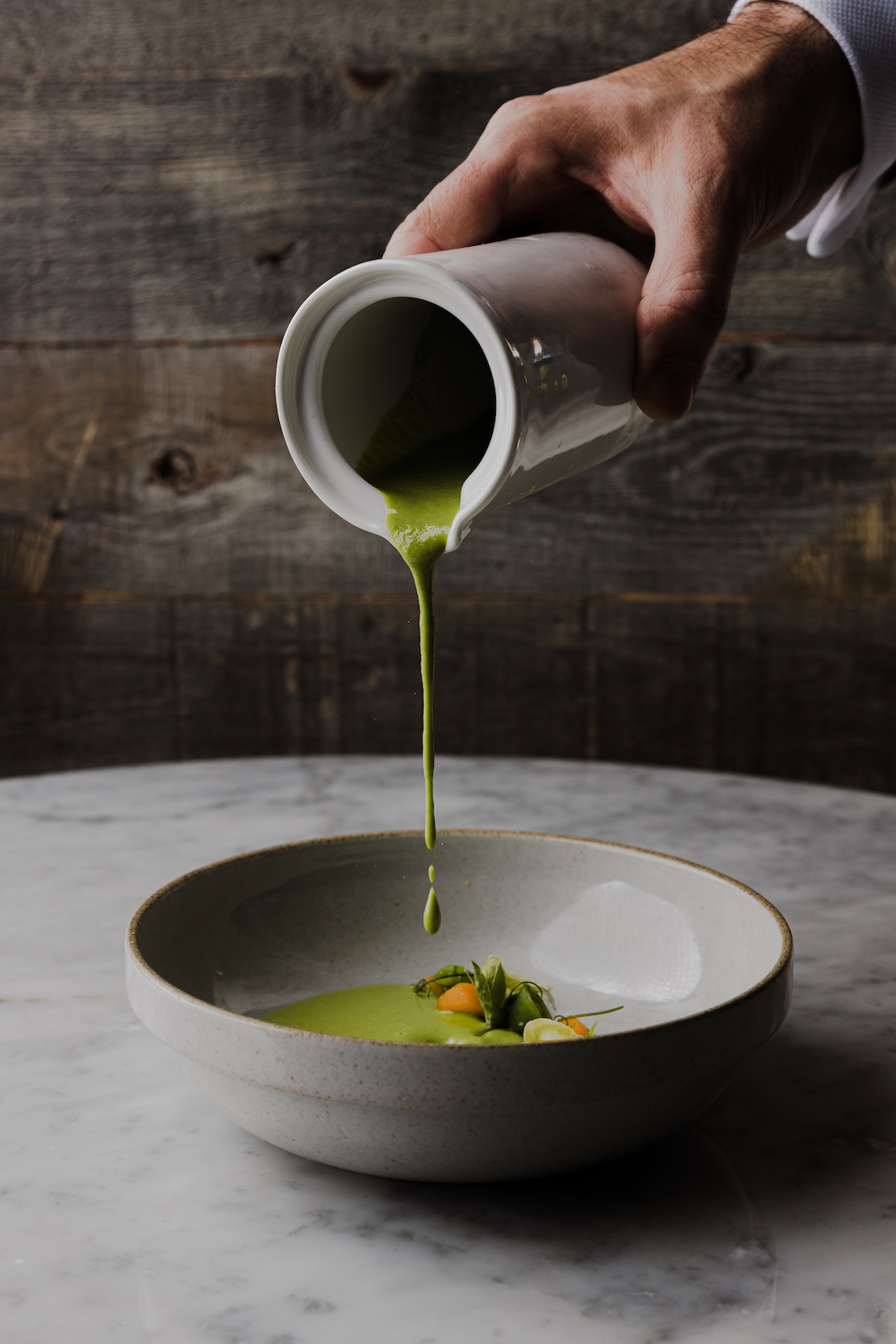 Southold
(now owned by chef John Fraser) provided
top-quality, beautifully presented fare in a
sleek modern setting with service galore. We
started with Duck Tot & Caviar, which were
smokey potato tots topped with a chunk of duck,
sour cream and caviar, followed by appetizers of
Tuna Crudo, small pastry rolls of raw tuna
capped by jalapeño slices, and scallops à la
Plancha, two large sea scallops accompanied by
an English pea aïoli. Main courses were roasted
medium rare Long Island Duck breast, the skin
rubbed with lavender, and a confit leg
accompanied by polenta; and a dish of small cuts
of grilled local fish. We concluded with a slice
of chocolate ganache and accompanied the meal
with a local 2016 Lenz Gewürztraminer. (Cost for
the meal, including the wine but not tax or a
tip, was $182.)
Southold
(now owned by chef John Fraser) provided
top-quality, beautifully presented fare in a
sleek modern setting with service galore. We
started with Duck Tot & Caviar, which were
smokey potato tots topped with a chunk of duck,
sour cream and caviar, followed by appetizers of
Tuna Crudo, small pastry rolls of raw tuna
capped by jalapeño slices, and scallops à la
Plancha, two large sea scallops accompanied by
an English pea aïoli. Main courses were roasted
medium rare Long Island Duck breast, the skin
rubbed with lavender, and a confit leg
accompanied by polenta; and a dish of small cuts
of grilled local fish. We concluded with a slice
of chocolate ganache and accompanied the meal
with a local 2016 Lenz Gewürztraminer. (Cost for
the meal, including the wine but not tax or a
tip, was $182.)
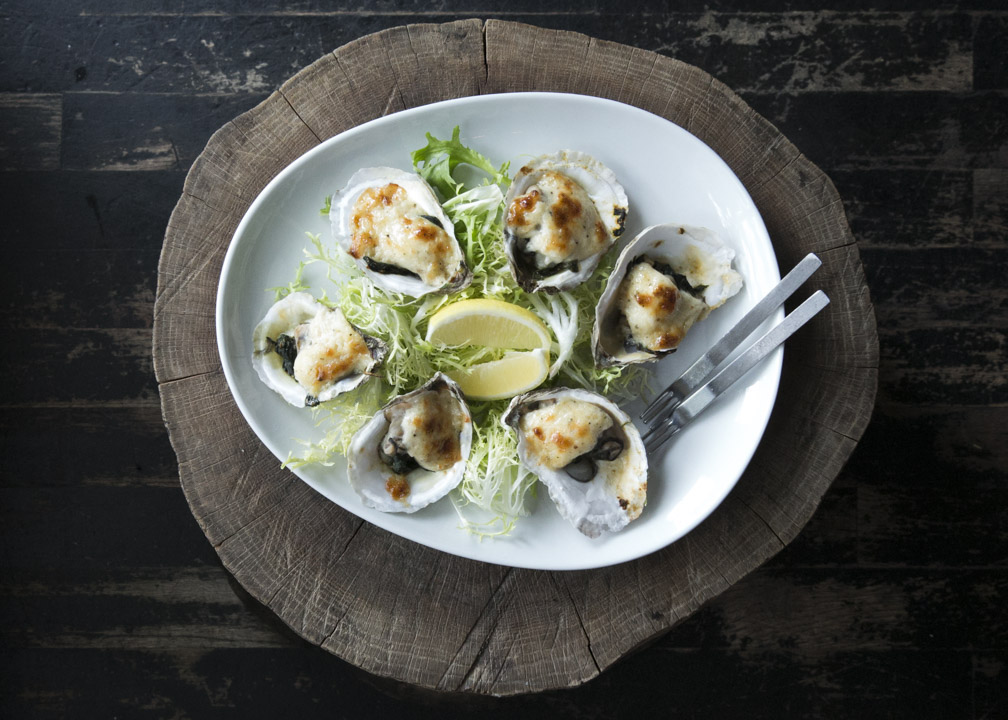 At
the highly touted Frisky
Oyster in Greenport (27 Front
Street) we dined on the small patio in
front of the restaurant. We shared the very
popular, must-have Oyster’s Friskafella, a
toothsome dish of
local oysters grilled with a topping of
garlic spinach, chipotle and parmigiano aïoli;
tuna spring rolls made with toasted cumin and a
tangy soy ginger dipping sauce; a grilled
lobster quesadilla, the tortilla loaded with
lobster chunks, avocado and cheese; a complex
chopped salad of jicama, hearts of palm,
artichokes and ricotta salata, doused with a
heady basil pesto vinaigrette; and an order of
large seared sea scallops served with a side of
risotto mixed with olive tapenade. We
accompanied the meal with glasses of the local
Macari Vineyards Cabernet Franc, and concluded
with a creamy chocolate chip affogato.
(The cost, not including wine, tax or tip, was
$140.)
At
the highly touted Frisky
Oyster in Greenport (27 Front
Street) we dined on the small patio in
front of the restaurant. We shared the very
popular, must-have Oyster’s Friskafella, a
toothsome dish of
local oysters grilled with a topping of
garlic spinach, chipotle and parmigiano aïoli;
tuna spring rolls made with toasted cumin and a
tangy soy ginger dipping sauce; a grilled
lobster quesadilla, the tortilla loaded with
lobster chunks, avocado and cheese; a complex
chopped salad of jicama, hearts of palm,
artichokes and ricotta salata, doused with a
heady basil pesto vinaigrette; and an order of
large seared sea scallops served with a side of
risotto mixed with olive tapenade. We
accompanied the meal with glasses of the local
Macari Vineyards Cabernet Franc, and concluded
with a creamy chocolate chip affogato.
(The cost, not including wine, tax or tip, was
$140.)
. . . And a
bit of golf.

The North Fork Country Club in Cutchogue is an 18-hole Donald Ross-designed scenic gem, surrounded by green space and water and featuring wide fairways with carpet-like grass, immaculately manicured greens and five sets of tee boxes playing from 4,485 to over 6,000 yards, making it enjoyable for novices and challenging for long hitters. Also, the recently refurbished clubhouse dining room offers well above average fare. While the club is private, with 400 family members, perhaps you can find a friend or friend of a friend to make you their guest.

Originally built in
1960 as a nine-hole golf course along the
Peconic Bay, the Island’s End Golf
& Country Club was expanded to a
6,700-yard course with 18 holes in 1963. It
features four sets of tees, fairly straight
forward holes with, for the most part, wide
tree-lined, fairly flat fairways and greens
protected by sand traps. While seemingly easy,
the par 3’s, most of which feature small
elevated greens, require pinpoint accuracy for
par or even a bogey. It’s open to the public
with tee times available a week in advance and a
greens fee of $65 per player.
❖❖❖
AMIGO BY NAI
29 Second Avenue
212-933-4487
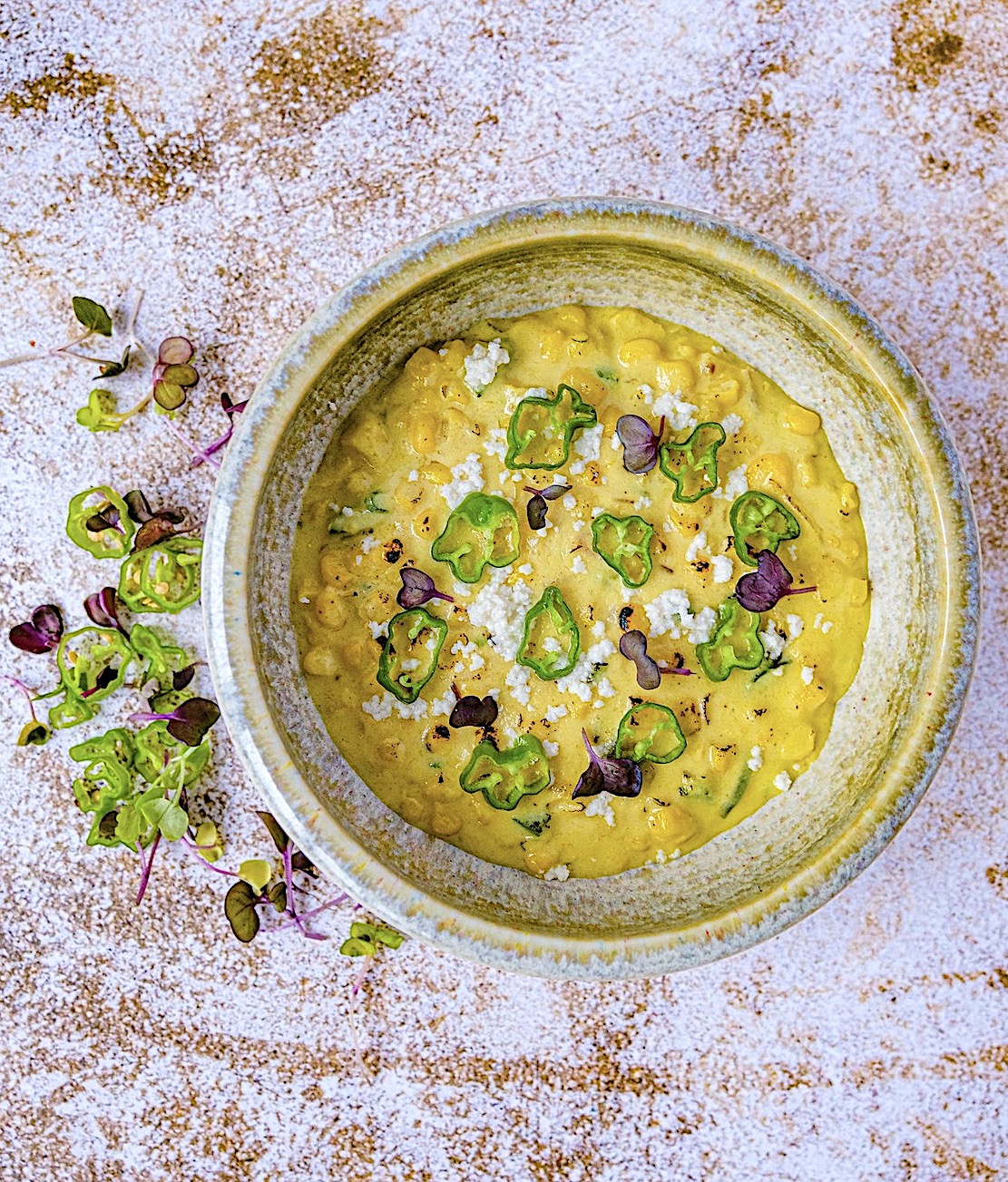
By John Mariani
Food
writers labor mightily to come up with new ways
to describe a dish’s flavor and try hard not to
over use the obvious words, like “delectable,”
the archaic “toothsome” and golly-gee words like
“yummy.” But I’m going to describe the food at
the new Amigo by Nai in the way I believe best
attests to its quality: “deeply delicious,” with
the emphasis on the “deeply.”
 Executive
chef-owner Rubén Rodriguez (left) and Nai
Restaurant Group, which own the estimable Nai
Tapas restaurant nearby, opened Amigo by Nai last
October as a counter-and-take-out taqueria,
but now it is a small, full-fledged restaurante
with 35 seats in the dining room, 12 at the bar
and 24 outside.
Executive
chef-owner Rubén Rodriguez (left) and Nai
Restaurant Group, which own the estimable Nai
Tapas restaurant nearby, opened Amigo by Nai last
October as a counter-and-take-out taqueria,
but now it is a small, full-fledged restaurante
with 35 seats in the dining room, 12 at the bar
and 24 outside.
Tacos do indeed underpin every dish in
colorful presentations, but you would hardly find
more than one on a menu at any restaurant in
Mexico City—you would have to ferret them out in a
dozen taquerias there, or anywhere else in Mexico,
where regionalism rules. The closest cuisine I
know to Rodriguez’s is perhaps that of the late
Patricia Quintana, who always fought the
stereotypes of Mexican cookery, in both her
cookbooks like Mexico’s Feasts of Life (1989) and
her pioneering restaurant Izote, as well as
Silvana Salcido Esparza’s taqueria Barrio Café in
Phoenix, Arizona. 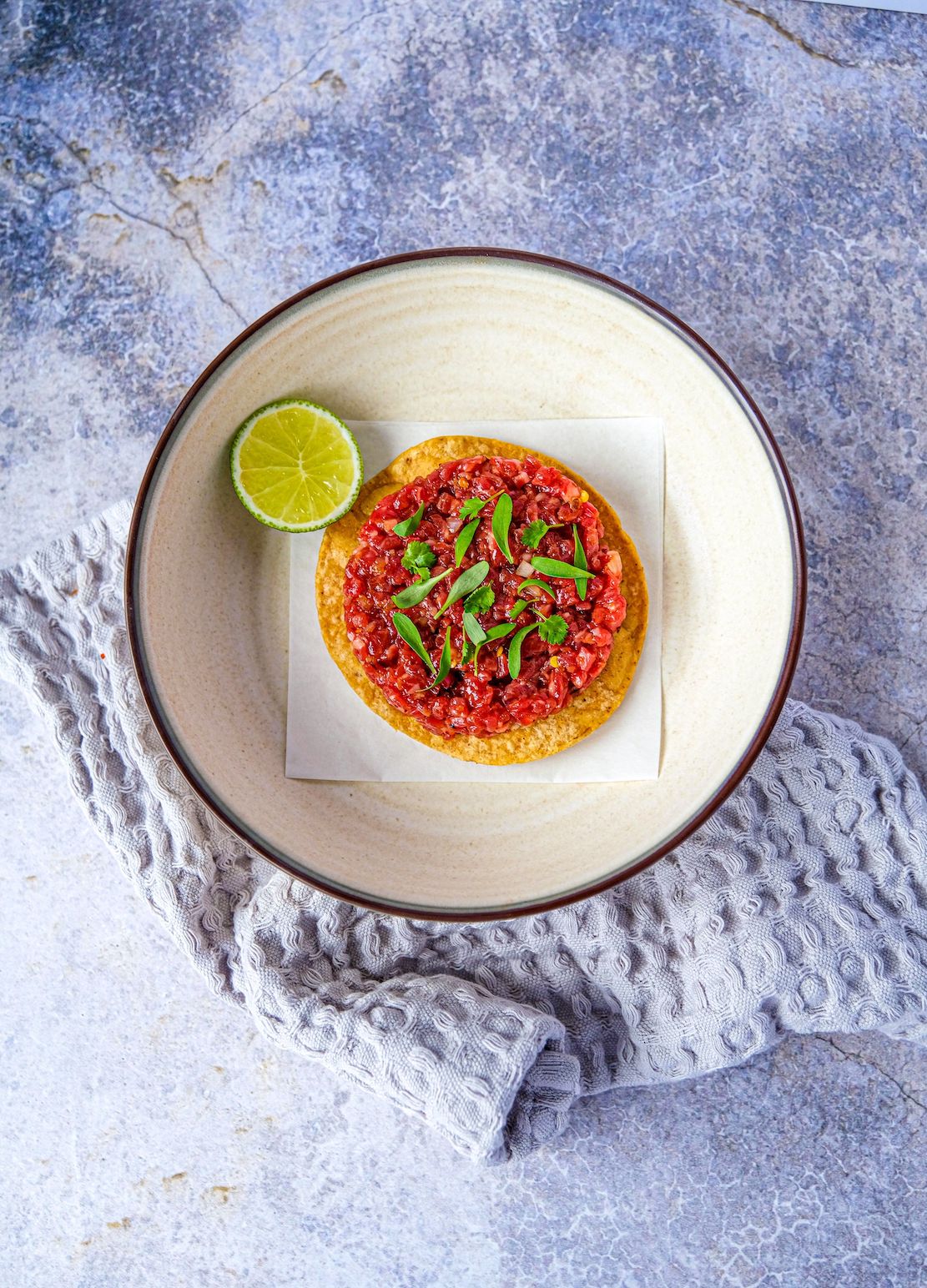
Each night Amigo by Nai offers 18 varieties
of tacos, some as appetizers, but nothing on the
menu costs more than $18, and that’s for a
terrific, impeccably chopped 45-day aged Prime
ribeye tartare in a Nixtamal
tortilla with Pedro Jiménez Sherry, cilantro and
lemon (right).
The
small, colorful dining room is minimally done up
like a set from the Jetsons, albeit with a
polished Italian terrazzo bar. When I visited this
month I
ate at a table outside, and the parade of people
sashaying down Second Avenue was a fascinating
show of Lower East Side diversity and street
fashion. On hand to direct everything with his
unceasingly affable disposition is General Manager
Raul Oléaga, formerly Director of Operations
at ViCool by Michelin-starred Madrileño chef
Sergi Arola.
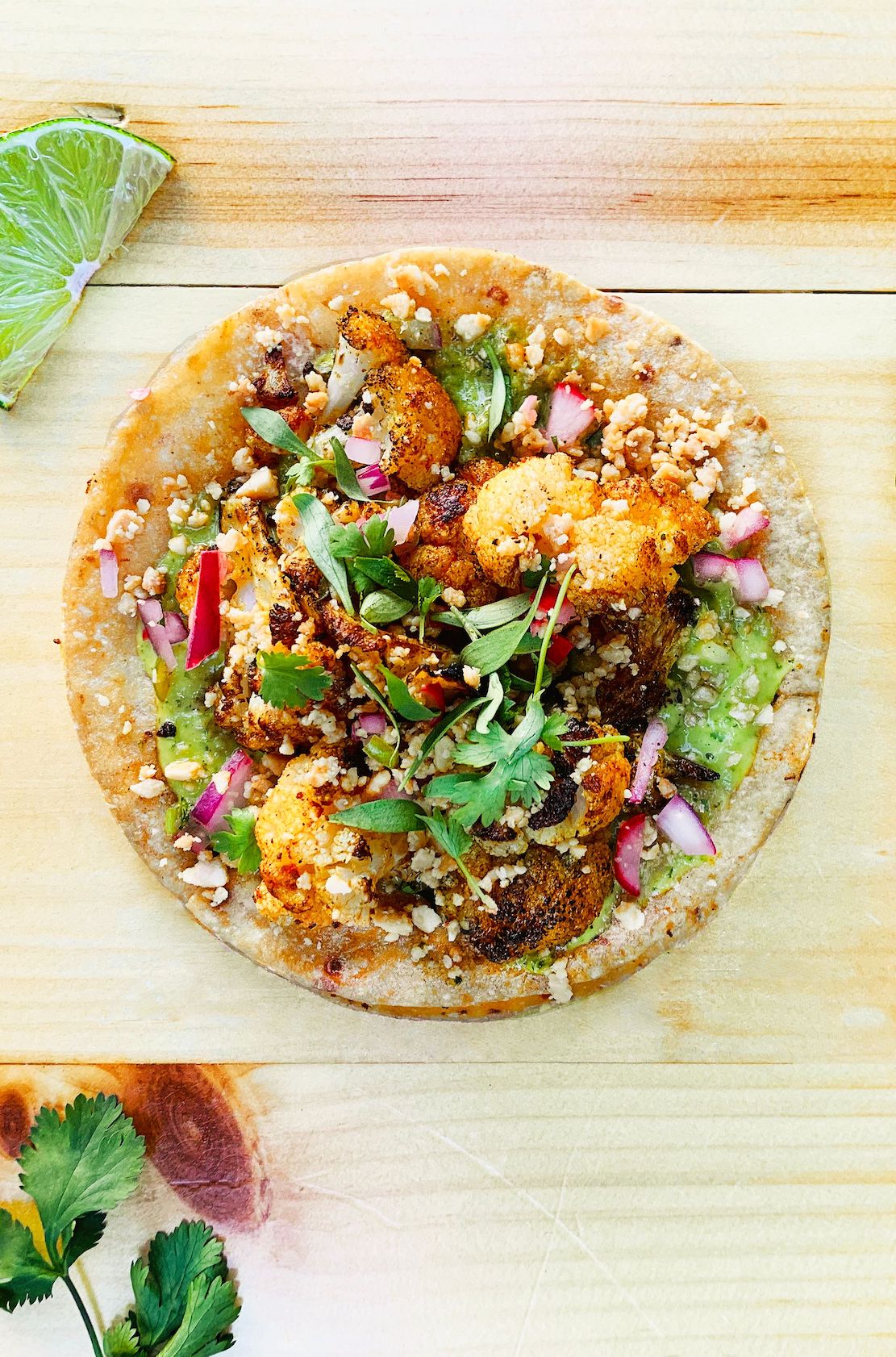 There’s a good wine
list at Amigo by Nai, but everyone begins with one
of Beverage Director
Niko Hagerty’s unique cocktail creations, like his
“What Happened to 8th Street” made with
wasabi-infused Dewars White Label Scotch, sea
salt, sesame seaweed, green chartreuse, matcha,
coconut, and Aztec chocolate, along with a
first-rate margarita. Hagerty, by the way, also
happens to a flamenco dancer at Nai.
There’s a good wine
list at Amigo by Nai, but everyone begins with one
of Beverage Director
Niko Hagerty’s unique cocktail creations, like his
“What Happened to 8th Street” made with
wasabi-infused Dewars White Label Scotch, sea
salt, sesame seaweed, green chartreuse, matcha,
coconut, and Aztec chocolate, along with a
first-rate margarita. Hagerty, by the way, also
happens to a flamenco dancer at Nai.
It’s difficult to find any lapses on
Rodriguez’s menu, for there’s a lot going on atop
these simple tacos, which are themselves
well-wrought, as with maciza bone-in
pork
butt with stomach meat, onion and a whole jalapeño
(below) that you squeeze to exude the juice
of the pepper ($6, but available by the pound for
$30), or his complex taco of pork belly with a
citrus gastrique
(left) that
cuts the fat and red salsa brava
($7). Exceptionally
good, creamy, sweet and savory is the maiz
gratinado of grated corn, queso fresco,
manchego cheese, cilantro and a pop of Serrano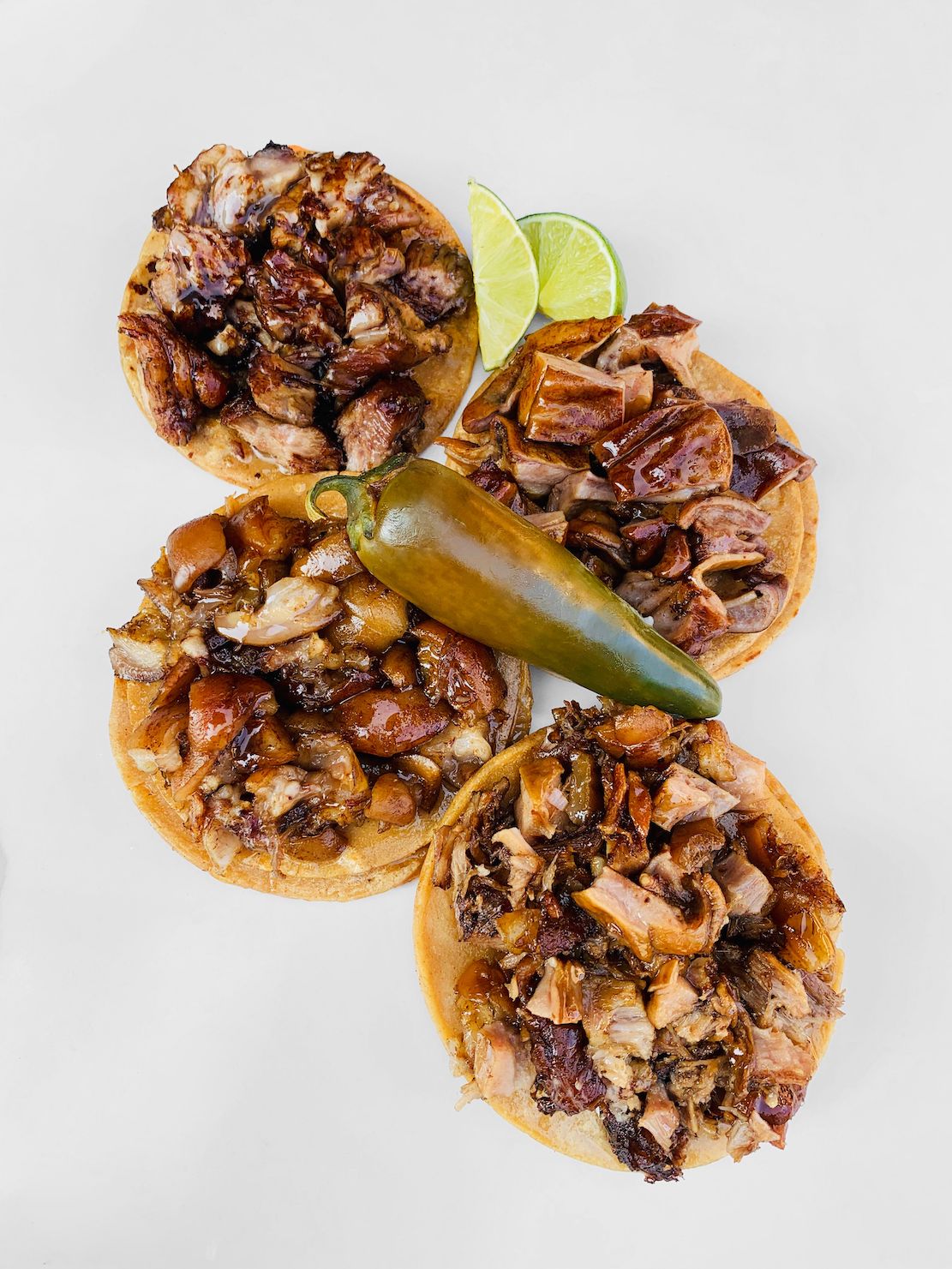 pepper ($12). For something especially refreshing
in this hot weather, try the citrus salad of
mango, orange, pistachio, onion and a sprightly
Thai chili spicing with lime ($14).
pepper ($12). For something especially refreshing
in this hot weather, try the citrus salad of
mango, orange, pistachio, onion and a sprightly
Thai chili spicing with lime ($14).
A crisp, warm empanada
is abundantly stuffed with juicy shredded beef,
sweet raisins, potato and olives ($12), while a churrasco
on a skewer is heavy with garlic, dashed with chimichurri
and that squirt of lime that finds its way
onto every dish ($14). Shrimp takes on a deeply
satisfying garlic sauce with an aïoli and red
cabbage ($8), and a beautifully battered, very
crisp tempura
of cod comes with chipotle
mayonnaise, Thai basil and red cabbage ($6). Rabo
(oxtail) is done with a rich red mojo, shishito
red peppers and a clear consommé on the side that
you could enjoy all on its own ($8).
For dessert Rodriguez does inverse churros,
those piping hot fritters that in Spain you dip
into thick hot chocolate; here he puts
Nutella-like chocolate with
hazelnuts inside the churro,
so when you bite into it the hot chocolate flows
over your tongue ($10). A classic Spanish flan
($7) made with sweetened condensed milk and raw
flake coconut is a light alternative to ice cream.
Rodriguez has more
irons in the company fire with more eateries in
mind soon, which proves yet again that not even
Covid can keep a true entrepreneur at bay for
long. I could readily see Amigo by Nais all over
the city. The closer to me, the better.
Open daily from 11:30 a.m. to 10:00 p.m.
CAPONE’S
GOLD
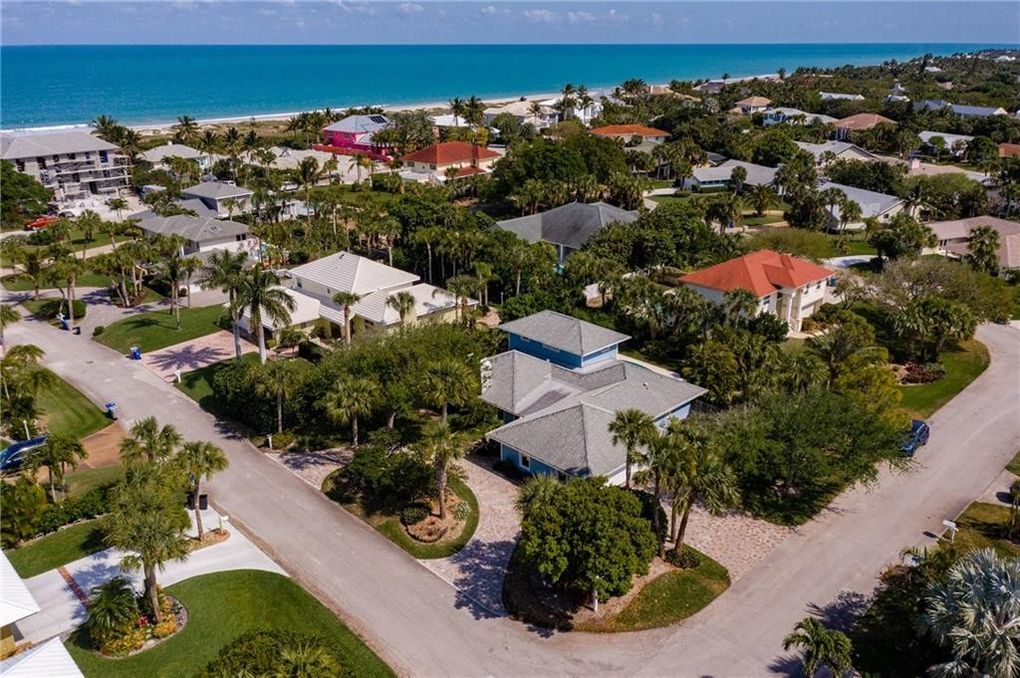 Mrs. Theresa
Scali—the last name was her husband’s—lived in one
of the older houses in Vero Beach, two-story,
pseudo-mission architecture with a tile roof and
stucco exterior. David stayed back at the motel
they’d booked the night before. When Katie pulled
into the driveway at ten sharp, Mrs. Scali was
waiting at the open door of the house.
Mrs. Theresa
Scali—the last name was her husband’s—lived in one
of the older houses in Vero Beach, two-story,
pseudo-mission architecture with a tile roof and
stucco exterior. David stayed back at the motel
they’d booked the night before. When Katie pulled
into the driveway at ten sharp, Mrs. Scali was
waiting at the open door of the house.Neither amiable nor withdrawn, she was a woman in her fifties, tanned skin, dark, graying hair, brown eyes and thick eyebrows something like her uncle Al’s. They introduced themselves and she invited Katie in, offering her coffee and bringing it to the dining room table.
There were no further preliminaries beyond Katie saying she liked the way Mrs. Scali had furnished the place.
“So what do you want to know about the family side of my uncle?” Al Capone’s niece asked, deadpan.
“Whatever you’d like to tell me,” said Katie.
“There’s not all that much to tell. I was only fifteen when he died and I only saw him at family gatherings, Christmas, Easter, christenings. To me he was just my uncle. As a child all I really knew was that he’d gone to jail because he didn’t pay his taxes. Of course, all the children, nephews and nieces, had heard stories about his days during Prohibition, but it’s not as if we read up about his career, so we were just told he was a bootlegger, sold liquor to people willing to pay for it, and
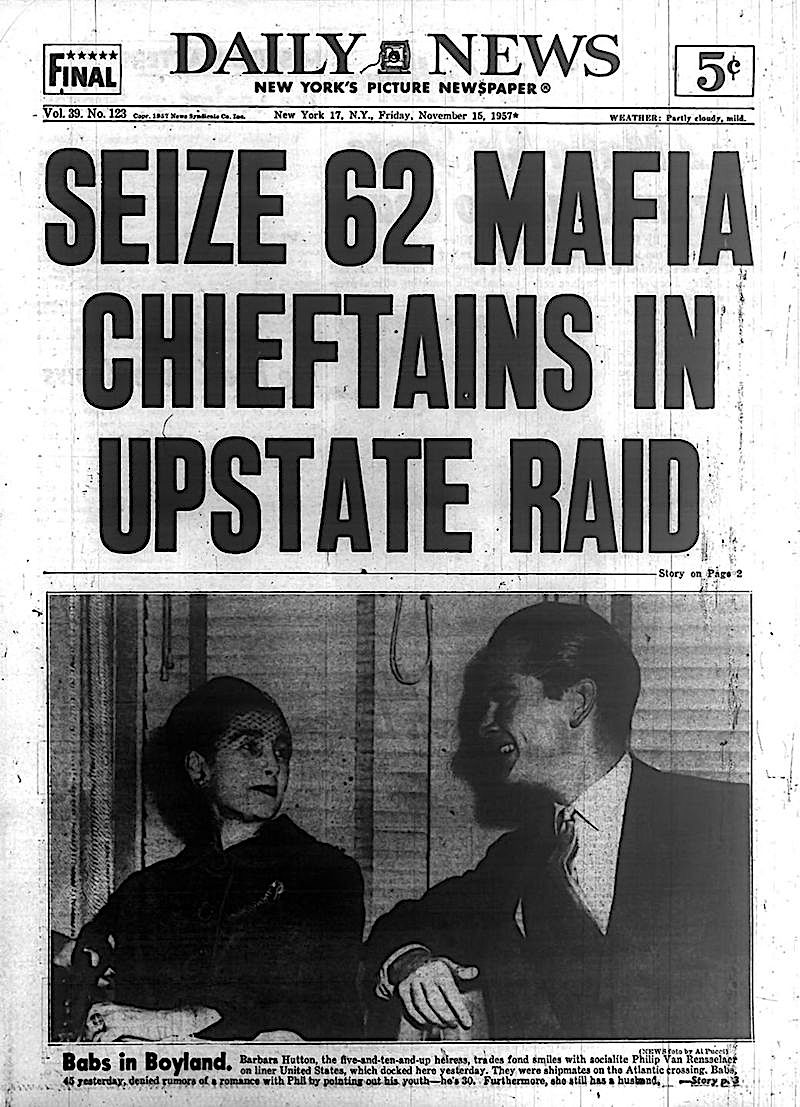 that he was a
very big wheel in Chicago.”
that he was a
very big wheel in Chicago.”“When did you find out more?” asked Katie.
“When I got into my twenties, I guess. I was a history major in college.”
“Really? History was my major,” said Katie, trying to warm the conversation up.
Mrs. Scali just kept talking. “And when I read 20th century American history, of course, the Roaring Twenties and Prohibition were discussed, so my uncle found his way into the history books by the 1950s, especially since it was when the Kefauver Commission was digging deeply into mob activities—even more so after the police rounded up sixty Mafiosi in a raid of their Appalachin meeting in 1957.”
“I remember that,” said Katie.
“So, I learned all about what my good old Uncle Al was accused of during the twenties and thirties, and I was shocked, like everyone else. A lot of my family either didn’t know much or didn’t want to know. My mother and my aunts and uncles had tried to distance themselves from Uncle Al’s reputation. Some changed their names.”
“What about you?”
“I graduated from college, got married, had two kids. My husband’s name was Scali. He died five years ago.”
“I’m so sorry,” said Katie.
“Well, he had a long-term illness,” then, changing the subject, “You’re Italian, right?”
“Uh-huh, Campania heritage.”
“So was our family. So, then you know about the bigotry Italian-Americans suffer from even now, with the mobster association, all Italians know Mafia guys, all the restaurants are mob-owned.”
“Oh, yeah, I’ve had all that thrown at me.”
“Well, just imagine having a last name of Capone. From the first day I went to school I heard about guineas and wops and how we are all greasers and gangsters. I didn’t understand the link to my name but quickly suffered from the anti-Italian bigotry.”
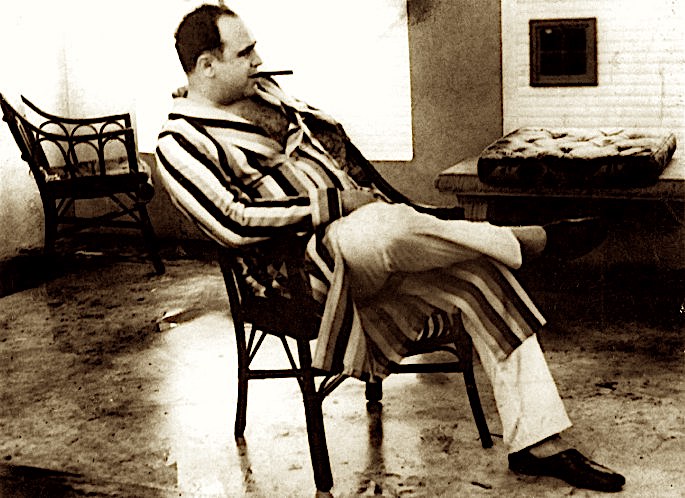 Katie thought they were on a
sympathetic wavelength and felt Mrs. Scali wanted to
tell her more.
Katie thought they were on a
sympathetic wavelength and felt Mrs. Scali wanted to
tell her more.“What was your uncle like at home?” Katie asked.
“Like any family’s eccentric uncle. He liked being catered to at family gatherings, but with the grandchildren and nieces and nephews he couldn’t be more generous or outgoing. And he knew how to load on the presents! I mean, we didn’t all get new bicycles at Christmas, but he bought us a lot of clothes and toys.”
“When you say eccentric, what do you mean?”
“Oh, Miss Cavuto . . .”
“Katie.”
“Okay, Katie. You know as well as I do that my uncle had caught syphilis early on and it ravaged his mind later. I never saw him blithering like an idiot, but he’d have astonishing mood swings. He’d be yelling about something someone didn’t do to his liking, then he’d break out into an Italian aria—and he had a pretty good voice, even at the end. Other times he’d just sit for long spells and not talk to anyone. I even saw him saying the rosary once. He had his moments when he seemed content with his life and others when he seemed very frightened. When he acted like a child, all the children thought he was acting. But all in all, what I remember is a rather sad man, not even fifty years old, seeming much older. I will say I never, ever saw anything about him that suggested he’d hurt a fly.
“But, of course, I know he did a lot of really bad things in his life, even if a lot of what he was accused of he might never have committed. You know that no one ever pinned the so-called Saint Valentine’s massacre on him? Or anyone else for that matter.”
“But I’ve read he threw a party after it happened,” said Katie.
“Yes, but that might have been because someone else had eliminated a number of his enemies. You know, there are some researchers who say it might really have been the police.”
“I’ve read that too.”
Katie turned to another crime never pinned on her uncle.
“Mrs. Scali, did you ever hear anything about your uncle masterminding a heist of Federal Reserve gold?”
“Gold? Not that I recall.”
“No one ever whispered about it in the family?”
“No, and if there had been gold hoarded somewhere by my uncle, what happened to it?”
“That’s what I’m trying to find out,” said Katie, who then told Mrs. Scali an abbreviated story of the heist and why the feds were still so anxious to retrieve it.
“Well, if Uncle Al did steal it, no one in the family saw any evidence of it. Believe me, at the end, Al Capone was not a rich man and no one in his family had stashes of money or gold I’ve ever heard of.”
“Well, all right then,” said Katie. “I think I have about all I need. Thanks so much for letting me speak with you, Mrs. Scali. And would you like to look over my notes?”
Theresa Scali shook her head and said, “No, Katie, I trust you. I really didn’t give you very much you can use, I’m afraid.”
“And thanks for the coffee,” said Katie, handing her cup and saucer to her host, then noticing that the coffee spoons were finished in gold, with the letter “C” on them. “They’re quite beautiful,” she said. “Family heirloom?”
“As a matter of fact, they are. They came from Uncle Al’s estate and I think they are pure gold or an alloy. We inherited them from my aunt, Al’s wife, Mae, who gave a place setting to various close members of the family.”
“One setting each?”
“Yes, she hadn’t kept the whole set, which I think was about 20 settings. You know, I think I have an old photo of my uncle’s dining room on Palm Island that shows them on the table. Give me a minute.”
Katie’s mind was turning. It seemed another piece of the puzzle had just appeared.
“Here it is,” said Theresa Scali. “In this old album.”
She turned over the pages and pointed to a sepia photo from the 1940s taken at the mansion.
“I think this was Easter. I was probably about ten years old. That’s me on the right.”
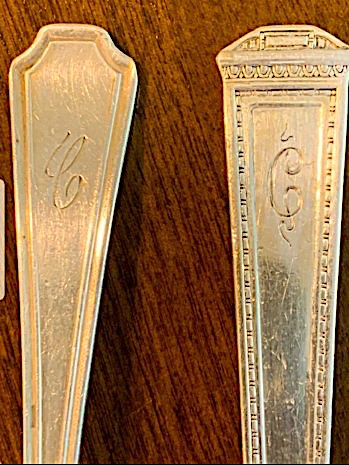 Katie looked closely at the
photo, spotting Al Capone, his wife and mother
immediately, then zeroing in on the table settings.
There was a full complement of spoons, salad forks,
large forks, butter and cutting knives, and dessert
spoons. The
salt and pepper shakers seemed to be in the same
style.
Katie looked closely at the
photo, spotting Al Capone, his wife and mother
immediately, then zeroing in on the table settings.
There was a full complement of spoons, salad forks,
large forks, butter and cutting knives, and dessert
spoons. The
salt and pepper shakers seemed to be in the same
style.“Were those dinner plates rimmed in gold, too?” asked Katie.
“I guess they must have been, as well as the chandeliers and the candlesticks. They’re all in the same style.”
“And you say you have a setting?”
“Yes, right here in the breakfront.”
Theresa Scali went to the drawer and took out a box that contained a velvet sack with gold tassels. She removed the contents and displayed them for Katie.
“May I?” asked Katie, wanting to feel their weight.
Theresa Scali nodded. Katie picked up the knife and fork and bounced them in her hands.
“My God, they really do weigh a lot. They must be pure gold.”
“Well, not the knife blades, maybe not the tines, but yes, I always remember them as a child lifting these heavy utensils. Do you think these came from that gold heist you spoke about?”
Katie wagged her head, saying, “I really don’t know. Anyone can buy or have gold flatware made. I had an aunt who had some, but my family thought it was flashy. But this is extraordinary stuff. Do you mind if I take a photo of them?”
“Go ahead,” said Theresa Scali, then, “I have no idea when Uncle Al acquired it or started using it. Wish I could be of more help.”
“Oh, you have, Mrs. Scali, a big help.”
“If we meet again, please call me Theresa,” she said and led Katie to the door. “And send me a copy of the article when you finish it.”
Katie felt oddly exhilarated, having now met two women who actually knew Capone and who had lent insight to the man once known as Public Enemy Number One. She didn’t know if David could make anything from the golden flatware and photo she’d seen, but she sped back to the motel and immediately phoned his room. They met in the lobby.
“How’d it go?” asked David.
“Very well, though I don’t know if I’ve advanced us very far.”
“Well, I’ve got some news, too. Nothing earth shattering, so you first.”
Katie told him about the interview with Theresa Scali, saying she was a very smart, well-educated woman for whom the Capone curse had receded long ago. She also told him about the flatware and the gold furnishings in the Capone mansion and showed him the photos she’d taken of the flatware pattern.
David rubbed his chin and said, “Well, I think there must be something there. Another puzzle piece.”
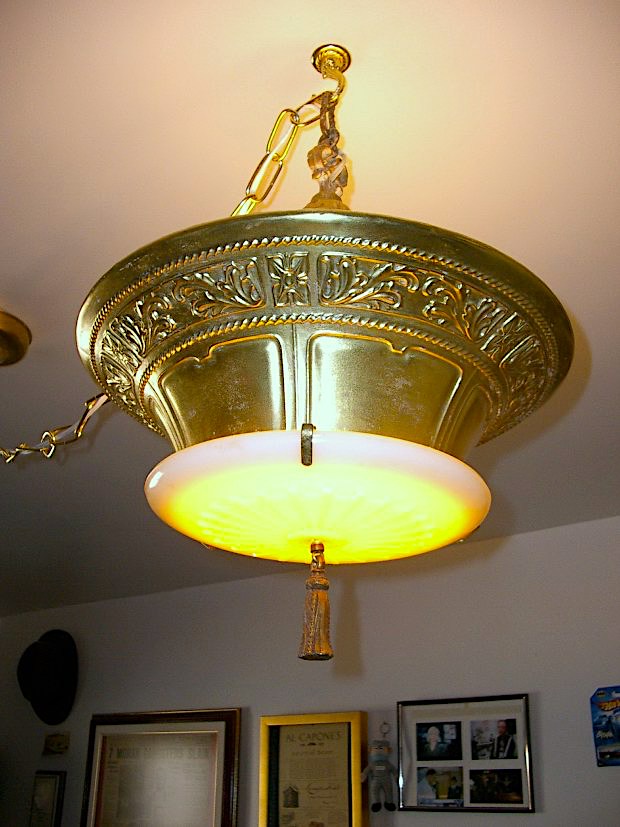
“I think so,” Katie said, “although it’s possible that Capone had that flatware made before the heist or even after he got out of prison. Any fine metals company could have made it for him.”
“True, but that would have taken an awful lot of gold at a time when Americans weren’t allowed to own any.”
“So, you do think it was gold from the robbery?” asked Katie.
“I do,” said David. “Problem is, that doesn’t amount to very much bullion, if melted down. The bulk of it certainly had to be somewhere else.”
“Hmm, I suppose you’re right. Oh, and what did you find out?”
“I got a call from my friend Cunningham about Officer Frascella.”
“And?”
“And, except for him being a mediocre cop, not much else. Cunningham believes him when he said he was just out at the Capone house out of interest and that he was taking photos of the house. There doesn’t seem to be anything more nefarious going on. I wouldn’t mind talking to the guy myself, see if I could get anything else out of him, but I don’t think that’s worth another flight to Chicago.”
“Okay, so where do we go from here?”
“Lunch sounds nice, assuming there’s any place around here that doesn’t serve just fried fish platters.”
“So after lunch we fly home to New York?” asked Katie.
“Yeah, I don’t see we’d achieve anything more sticking around here, unless Capone comes walking through the door.”
Katie hesitated for a moment, then said, “You think we’re stuck?”
“No,” said David, “I think we have to re-adjust our sights. The gold is still out there, and we know a few places it is not located. However, process of elimination leaves everywhere else in the world.”
“So what do I tell my editor at this point?”
“Tell him we’re hot on the trail and need more time.”
“I’ve got to give him something more than that,” she said.
“Just tell him who you’ve interviewed and what you’ve seen snooping around in Capone’s houses. And say you and I are starting to stitch things together.”
“I suppose that will work. I just wish we had something more solid to report.”
“You and me both,” said David, putting his arm on her shoulder. “But trust me, Katie Cavuto. We make a good team. And when I was on the force, having a trusted lieutenant you could work with was worth a whole task force. Remember, some of my cases could take years to develop and figure out where the money was coming from and going.”
“Yeah, but your suspects were still alive.”
“Unless they got bumped off before I got to them.”
“Maybe we should bug Al’s grave,” she said. “You know he believed in the spirit world, so he might still be talking.”
David smiled and said, “Everything will look better after lunch.”
Katie said, “That’s what Churchill used to say whenever he was delivered really bad news about the war.”
© John Mariani, 2015
❖❖❖
THE WINERIES OF THE NORTH FORK, LONG ISLAND
By Geoff Kalish

On our recent visit to Long Island’s North Fork we sampled the wares of eight wineries. And, especially for consumers planning a visit to the area, the following (listed by producer) are a dozen wines to definitely try and perhaps purchase. If you go, be sure to check out the hours and policies of the wineries as some require advance appointments and some are not open daily.
Sparkling Pointa (in Southold)

2011 Brut Seduction ($70)—Made by the traditional Champagne process (Méthode Champenoise), in which the second fermentation to produce the bubbles takes place in the bottle, this elegant blend of Chardonnay (54%) and Pinot Noir (46%) spent eight years on its lees before disgorgement and bottling. It shows a slightly pink tinge and offers a bouquet and taste of apples and brioche and a crisp finish that’s great to mate with lobster and other shellfish.
2016 Blanc de Noirs ($75)—Made from a blend of Pinot Noir and Pinot Meunier by the Méthode Champénoise, this very fruity bubbly with a bouquet and taste of strawberries and raspberries was aged on its lees (wasted yeast) for 3 ½ years before bottling. It has a smooth, fruity finish, perfect for sipping with a range of hors d’oeuvres, especially smoked salmon.
 Paumanok Vineyards (in
Aquebogue)
Paumanok Vineyards (in
Aquebogue)2020 Chenin Blanc ($29)—Fermented and aged in stainless-steel, this wine features a bouquet and taste of melons and pineapple, with notes of grapefruit in its finish. It’s perfect to sip on a summer day with fare like poke bowls, sushi or flavorful cheeses.
2020 Dry Riesling ($22)—This fragrant wine with flavors of apples, ripe peaches and pears rivals the best of the Finger Lakes. Made totally in stainless steel from estate-grown grapes, it makes good accompaniment for grilled chicken breasts or mild fish, like branzino.
Laurel Lakes Vineyards ( in Laurel)
2015 Syrah ($28)—This barrel-aged wine (18 months in French oak following fermentation) shows a bouquet and intense flavor of ripe cherries and plums with hints of vanilla in its slightly peppery finish. Mate this wine with full flavored fare like brisket of beef, garlicky lamb chops or veal Parmigiana.
Jamesport Vineyards (in Jamesport)
2019 Saddleback Reserve Chardonnay ($40)—Made from hand-harvested grapes, fermented in oak as whole clusters using native yeast, this wine was aged in French oak for 10 months prior to bottling. It has a bouquet and taste of ripe apples and vanilla with a crisp finish that marries well with oysters and clams on the half shell as well as shrimp and lobster.
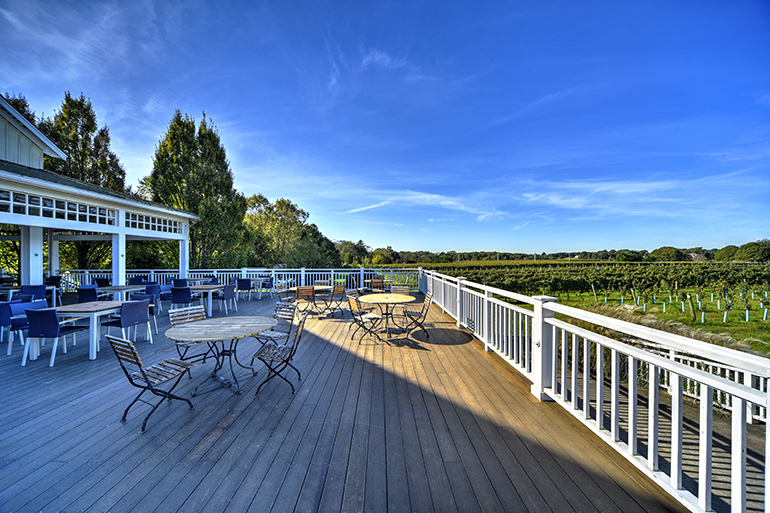 Bedell Cellars
(in Cutchogue)
Bedell Cellars
(in Cutchogue)2019 Cabernet Franc ($45)—Aged in older French oak barrels for about nine months, this wine, with a bouquet and taste of plums, cherries and cassis with a bit of tannin in its finish, is drinking well now, but should even improve in the next few years with a taming of its tannin. It marries well with duck or grilled beef.
2019 Merlot ($30)—This easy-drinking wine was fashioned from hand-harvested, sustainably farmed grapes. It shows a rich bouquet and elegant taste of ripe cherries and raspberries and is an excellent choice to accompany hamburgers, pizza or grilled chicken wings.
Pugliese Vineyards (in Cutchogue)
2015 Sunset Meritage ($35)—Produced from a blend of Merlot, Cabernet Sauvignon and Cabernet Franc, this wine shows a bouquet and flavors of cassis, cherries and plums with notes of herbs in its finish. Try it with grilled steak, veal or lamb chops.
One Woman Wines & Vineyards (in Southold)
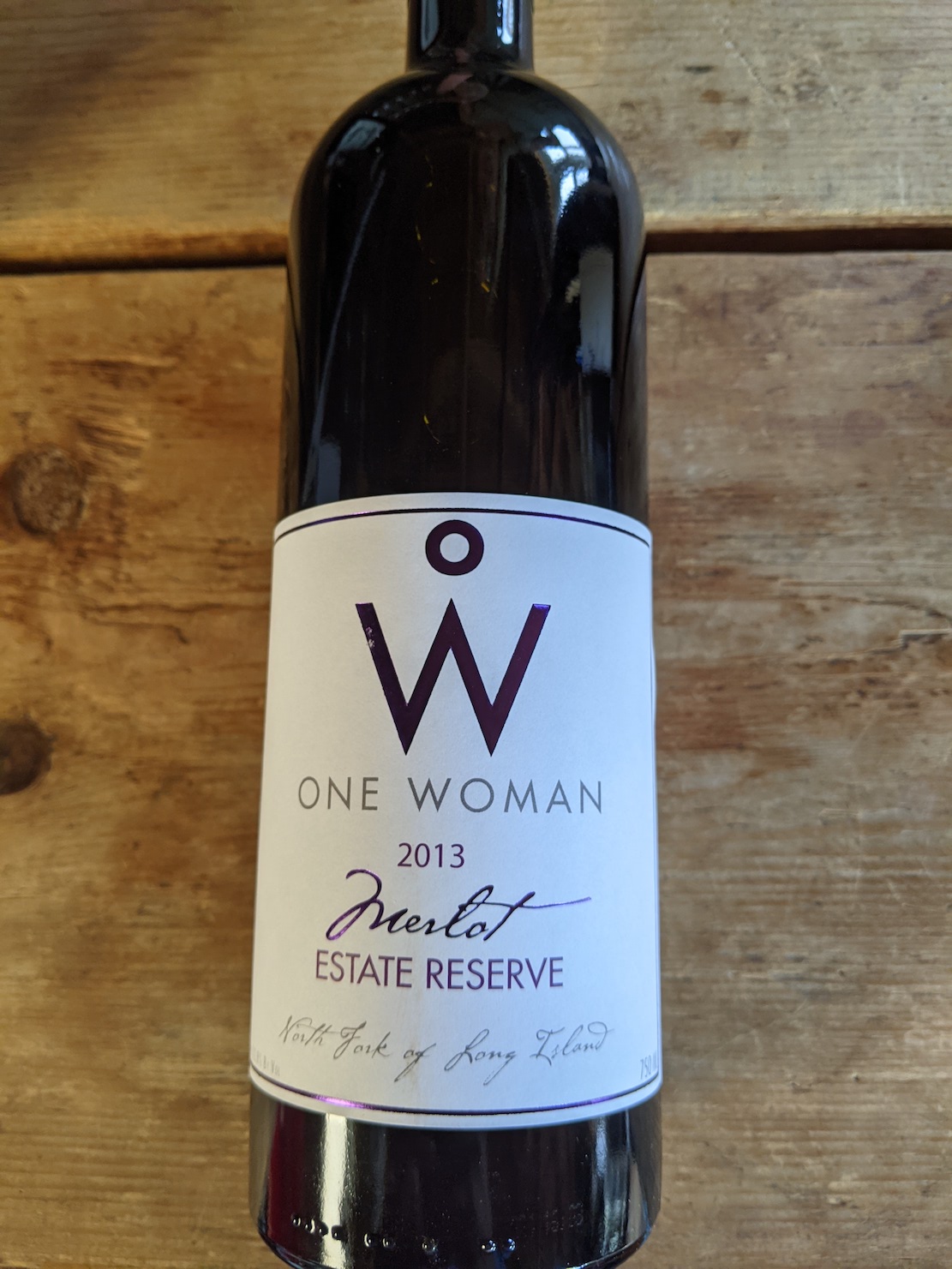
2014 Merlot ($28)—Following fermentation, this medium-bodied wine with a strong bouquet and taste of ripe cherries and plums was aged in French oak barrels for 18 months before bottling. It’s great to sip with appetizers like bruschetta, guacamole or toast with olive tapenade.
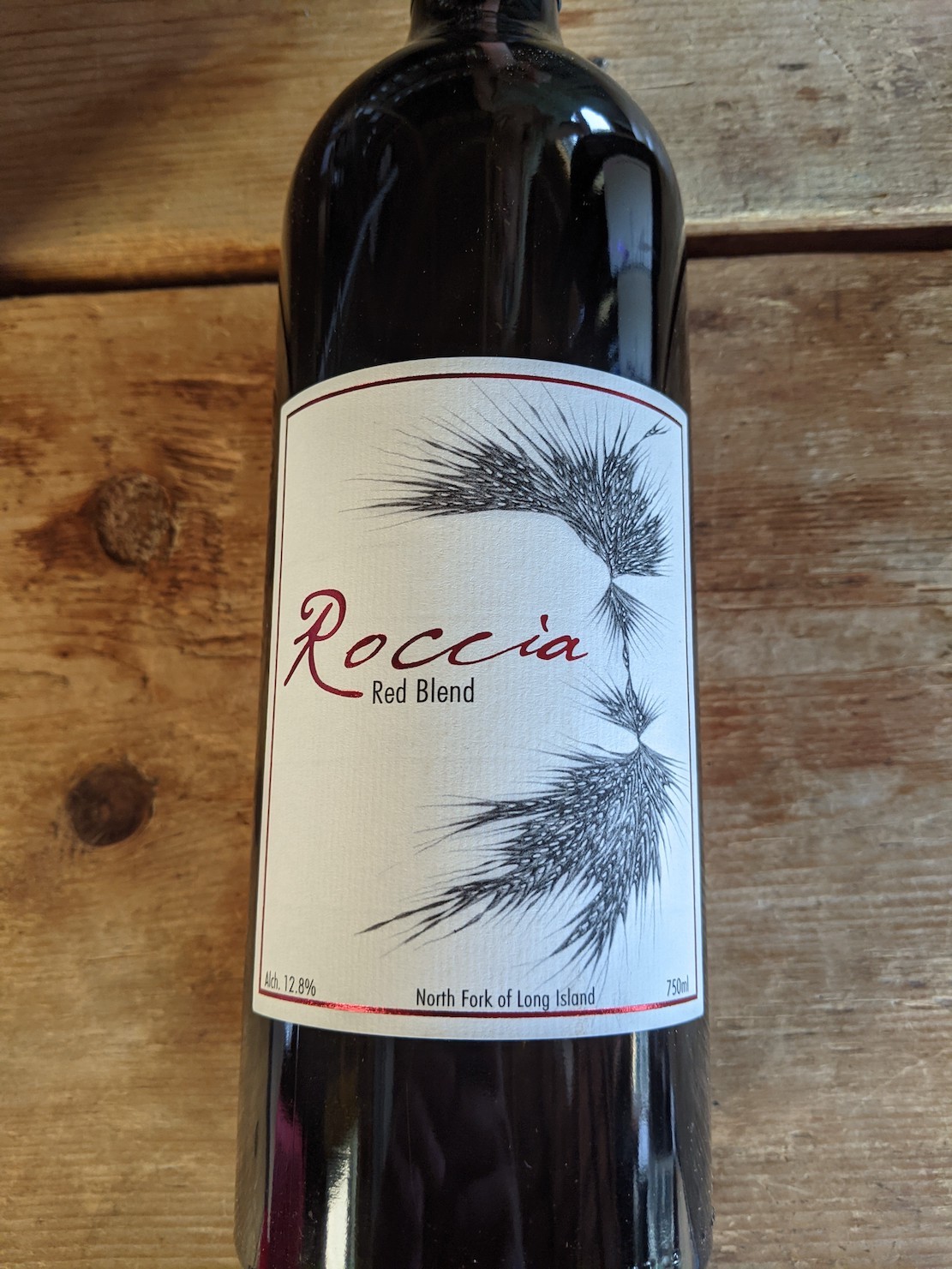 Roccia Red Blend ($68)—A tribute to the younger brother
of owner/winemaker Claudia Purita, who died in 2016,
this very limited production is a blend of seven
grapes (Cabernet Sauvignon, Cabernet Franc, Merlot,
Petit Verdot, Malbec, Pinot Noir and Dolcetto). Showing a
bouquet and taste of ripe blueberries and cassis with
notes of figs and chocolate in its finish, this wine
makes good accompaniment to leg of lamb, braised beef
or ripe cheeses.
Roccia Red Blend ($68)—A tribute to the younger brother
of owner/winemaker Claudia Purita, who died in 2016,
this very limited production is a blend of seven
grapes (Cabernet Sauvignon, Cabernet Franc, Merlot,
Petit Verdot, Malbec, Pinot Noir and Dolcetto). Showing a
bouquet and taste of ripe blueberries and cassis with
notes of figs and chocolate in its finish, this wine
makes good accompaniment to leg of lamb, braised beef
or ripe cheeses.Pinder Vineyards (in Peconic)
2020 Riesling ($22)
This slightly sweet wine, with a bouquet and taste of ripe melons and pears, makes an excellent mate for spicy Asian or Mexican fare.
❖❖❖

Marcy Shaffer, 43, a prison guard, was fired and arrested after trying to smuggle prescription stimulant pills into a South Carolina women’s prison by hiding them in Rice Krispies treats.
❖❖❖
Sponsored by

Any of John Mariani's books below may be ordered from amazon.com.
 The Hound in Heaven
(21st Century Lion Books) is a novella, and
for anyone who loves dogs, Christmas, romance,
inspiration, even the supernatural, I hope you'll find
this to be a treasured favorite. The story
concerns how, after a New England teacher, his wife and
their two daughters adopt a stray puppy found in their
barn in northern Maine, their lives seem full of promise.
But when tragedy strikes, their wonderful dog Lazarus and
the spirit of Christmas are the only things that may bring
his master back from the edge of despair.
The Hound in Heaven
(21st Century Lion Books) is a novella, and
for anyone who loves dogs, Christmas, romance,
inspiration, even the supernatural, I hope you'll find
this to be a treasured favorite. The story
concerns how, after a New England teacher, his wife and
their two daughters adopt a stray puppy found in their
barn in northern Maine, their lives seem full of promise.
But when tragedy strikes, their wonderful dog Lazarus and
the spirit of Christmas are the only things that may bring
his master back from the edge of despair. WATCH THE VIDEO!
“What a huge surprise turn this story took! I was completely stunned! I truly enjoyed this book and its message.” – Actress Ali MacGraw
“He had me at Page One. The amount of heart, human insight, soul searching, and deft literary strength that John Mariani pours into this airtight novella is vertigo-inducing. Perhaps ‘wow’ would be the best comment.” – James Dalessandro, author of Bohemian Heart and 1906.
“John Mariani’s Hound in Heaven starts with a well-painted portrayal of an American family, along with the requisite dog. A surprise event flips the action of the novel and captures us for a voyage leading to a hopeful and heart-warming message. A page turning, one sitting read, it’s the perfect antidote for the winter and promotion of holiday celebration.” – Ann Pearlman, author of The Christmas Cookie Club and A Gift for my Sister.
“John Mariani’s concise, achingly beautiful novella pulls a literary rabbit out of a hat – a mash-up of the cosmic and the intimate, the tragic and the heart-warming – a Christmas tale for all ages, and all faiths. Read it to your children, read it to yourself… but read it. Early and often. Highly recommended.” – Jay Bonansinga, New York Times bestselling author of Pinkerton’s War, The Sinking of The Eastland, and The Walking Dead: The Road To Woodbury.
“Amazing things happen when you open your heart to an animal. The Hound in Heaven delivers a powerful story of healing that is forged in the spiritual relationship between a man and his best friend. The book brings a message of hope that can enrich our images of family, love, and loss.” – Dr. Barbara Royal, author of The Royal Treatment.
 |
The Encyclopedia of American Food and Drink by John F. Mariani (Bloomsbury USA, $35) Modesty forbids me to praise my own new book, but let me proudly say that it is an extensive revision of the 4th edition that appeared more than a decade ago, before locavores, molecular cuisine, modernist cuisine, the Food Network and so much more, now included. Word origins have been completely updated, as have per capita consumption and production stats. Most important, for the first time since publication in the 1980s, the book includes more than 100 biographies of Americans who have changed the way we cook, eat and drink -- from Fannie Farmer and Julia Child to Robert Mondavi and Thomas Keller. "This book is amazing! It has entries for everything from `abalone' to `zwieback,' plus more than 500 recipes for classic American dishes and drinks."--Devra First, The Boston Globe. "Much needed in any kitchen library."--Bon Appetit. |
"Eating Italian will never be the same after reading John Mariani's entertaining and savory gastronomical history of the cuisine of Italy and how it won over appetites worldwide. . . . This book is such a tasteful narrative that it will literally make you hungry for Italian food and arouse your appetite for gastronomical history."--Don Oldenburg, USA Today. "Italian
restaurants--some good, some glitzy--far
outnumber their French rivals. Many of
these establishments are zestfully described
in How Italian Food Conquered the World, an
entertaining and fact-filled chronicle by
food-and-wine correspondent John F.
Mariani."--Aram Bakshian Jr., Wall Street
Journal.
"Equal parts
history, sociology, gastronomy, and just
plain fun, How Italian Food Conquered the
World tells the captivating and delicious
story of the (let's face it) everybody's
favorite cuisine with clarity, verve and
more than one surprise."--Colman Andrews,
editorial director of The Daily
Meal.com. "A fantastic and fascinating
read, covering everything from the influence
of Venice's spice trade to the impact of
Italian immigrants in America and the
evolution of alta cucina. This book will
serve as a terrific resource to anyone
interested in the real story of Italian
food."--Mary Ann Esposito, host of PBS-TV's
Ciao
Italia. "John Mariani has written the
definitive history of how Italians won their
way into our hearts, minds, and
stomachs. It's a story of pleasure over
pomp and taste over technique."--Danny Meyer,
owner of NYC restaurants Union Square
Cafe, The Modern, and Maialino.
|
 |
 |
 |
 |
 |
 |
 Everett Potter's Travel Report:
Everett Potter's Travel Report: 
 Eating Las
Vegas JOHN CURTAS has been covering
the Las Vegas food and restaurant scene
since 1995. He is the co-author of EATING LAS
VEGAS – The 50 Essential Restaurants (as
well as the author of the Eating Las
Vegas web site: www.eatinglasvegas.
He can also be seen every Friday morning as
the “resident foodie” for Wake Up With the
Wagners on KSNV TV (NBC) Channel 3 in
Las Vegas.
Eating Las
Vegas JOHN CURTAS has been covering
the Las Vegas food and restaurant scene
since 1995. He is the co-author of EATING LAS
VEGAS – The 50 Essential Restaurants (as
well as the author of the Eating Las
Vegas web site: www.eatinglasvegas.
He can also be seen every Friday morning as
the “resident foodie” for Wake Up With the
Wagners on KSNV TV (NBC) Channel 3 in
Las Vegas.
MARIANI'S VIRTUAL GOURMET
NEWSLETTER is published weekly. Publisher: John Mariani. Editor: Walter Bagley. Contributing Writers: Christopher Mariani,
Robert Mariani, Misha Mariani, John A. Curtas, Gerry Dawes, Geoff Kalish,
and Brian Freedman. Contributing
Photographer: Galina Dargery. Technical
Advisor: Gerry
McLoughlin.
If you wish to subscribe to this
newsletter, please click here: http://www.johnmariani.com/subscribe/index.html
© copyright John Mariani 2021
